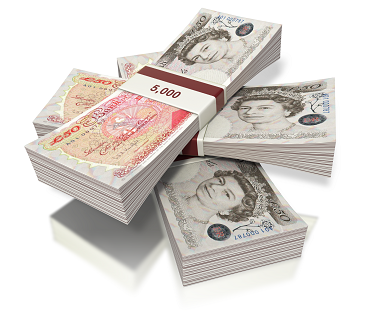4 Taking money out of a business
The main, but not only, reason an individual starts a small business is to provide income of some sort.
We will now look at the different ways money can move out of a business to the owner. We will use the case study [Tip: hold Ctrl and click a link to open it in a new tab. (Hide tip)] examples of sole trader, partnership and the director of a limited company, as examples. (To open the case study in a new tab on a PC, hold down the Ctrl key when clicking.)
Sole trader: Mucky Pets
As a sole trader, Alex can make drawings from the business. This is because there is no distinction between Alex and the business for tax purposes. Alex submits a self-assessment tax return which includes a section in the tax return for sole trader income.
It makes sense for Alex to have a separate bank account for the business and a personal one, so that it is easy to see where the income and expenses for the business sit. With just one bank account, Alex would need to separate the figures manually. Alex pays tax on the profits made in the business.
Alex must remember to pay national insurance contributions as a self-employed person and remember that all taxable profit from the sole trader business makes must be included in the self-assessment tax return as taxable income, even if Alex does not withdraw the entire profit amount into a personal bank account.
Partnership: Bike-a-lot
If Bike-a-lot is structured as a partnership, Nicky and partner pay themselves in a similar way to that of a sole trader. They must discuss this and ensure that the way the funds are drawn are in line with the rights specified in their partnership agreement (as each partner has a right to the funds). A separate tax return is submitted for the partnership but the partnership does not pay any tax. The tax is paid in the personal tax returns for the partners – each pay tax in their personal tax return on the share of the partnership profit that each receive.
Limited company: JJ Components
Now it gets a little trickier.
JJ Components is treated as a separate entity to JJ, even though JJ is the only shareholder. The company submits a separate tax return and pays any tax due. JJ submits a self-assessment tax return. JJ cannot just take money out of the company.
JJ could set up as an employee of the company and get paid a wage. JJ will need to pay the correct income tax and national insurance contributions. JJ will also need to be paid a work place pension in the near future. This is just the same as if JJ worked for any other company.
In addition, as a shareholder of the company JJ is able to take money out of the company through payment of a dividend. When it comes to paying a dividend, it is simply a distribution of profits and tax is paid through the self-assessment tax return.
An accountant would tell JJ the most beneficial split between salary and dividends.
Some key points for the limited company
Salary
- Any salary paid will attract national insurance contributions and income tax payments.
- To pay a salary, the company must be set up as an employer.
- Salaries are deducted from the company profits and so reduces the amount of corporation tax paid.
- In the near future all employers must provide a work place pension, even if they only employ one employee.
Dividends
- Can only be paid out of company profits after corporation tax is paid.
- Do not attract national insurance contributions.
- Are taxed through the individual’s self-assessment tax return.
3 An example of business accounts

